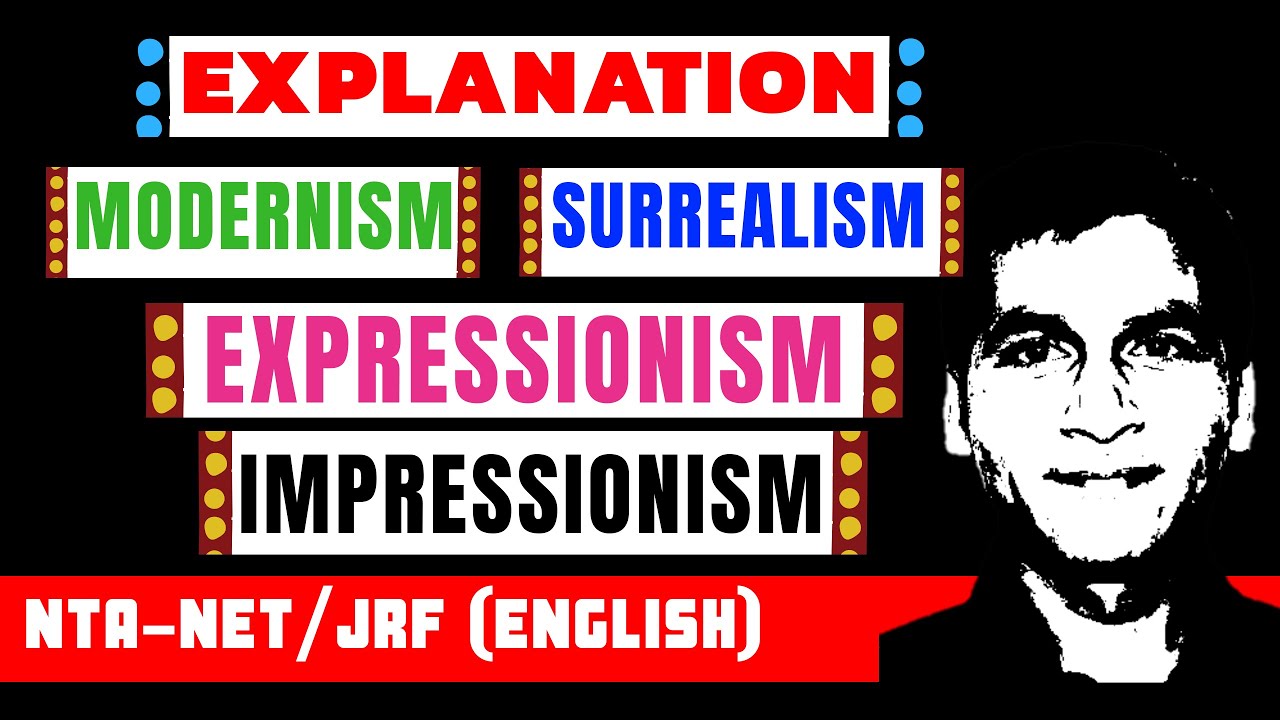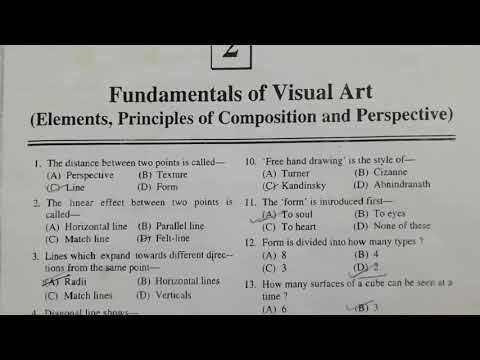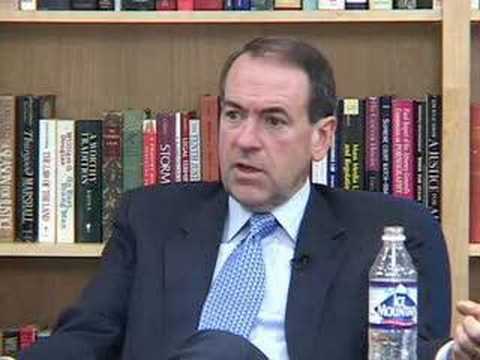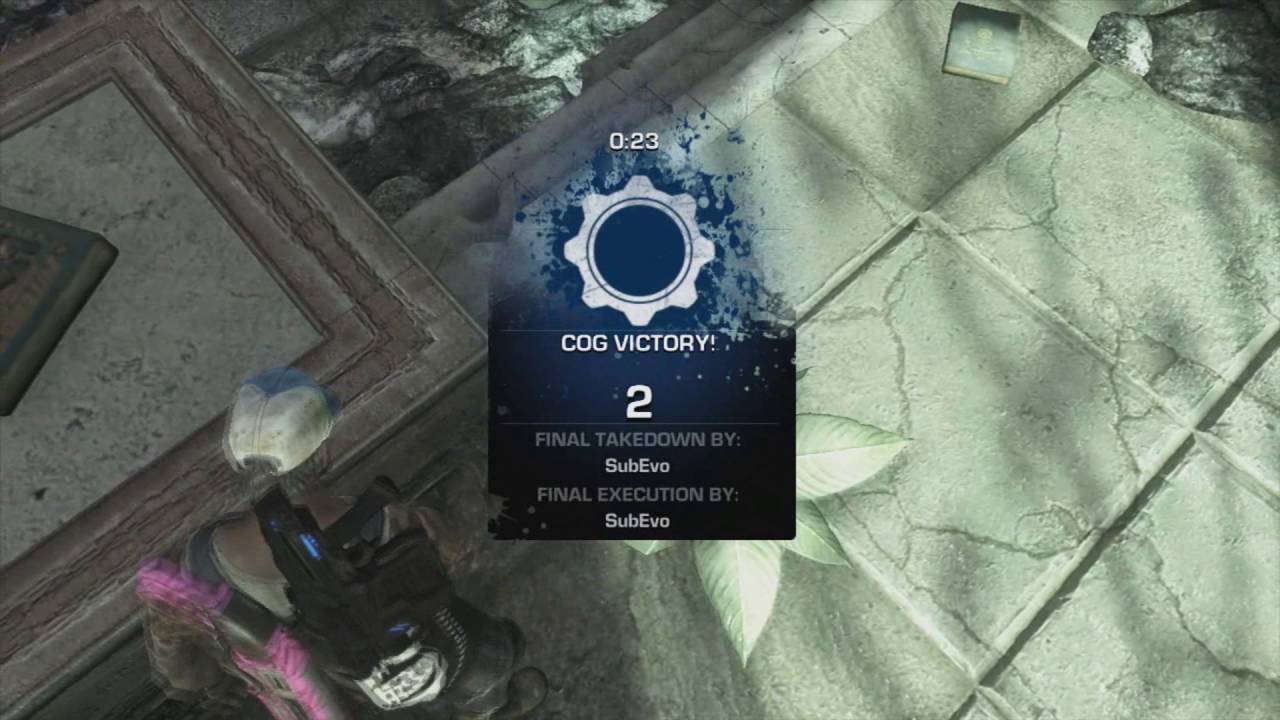ENGLIT
#modernism, #surrealism, #impressionism, #expressionism, #netenglish, #ntanet, #ntajrf, #ltgradeenglishexamuppsc
#drgdsharma
In this video I have tried to explain some of the movements and literary trends in Section A Literature (LT Grade Exam UPPSC) so that the representative texts are understood easily. This will help simplify the method of preparing for LT Grade English Exam while following the syllabus. These movements are generally considered rather tough, however my endeavor has been to explain some of the core contents related to these literary movements. Added to it I have dealt with the basic facts related to them so that all the possible questions about them are answered in the exam. The historical facts and the definition of these literary trends will certainly help you understand the representative texts in Sections B, C, & D.
As regards modernism it is an umbrella term that covers many areas, and particularly, it applies to all the creative arts: fiction, drama, music and architecture. As far as the starting point of modernism is concerned, there is no authoritative or official declaration about the starting point of this movement, however, if we have to ascertain some point, late 19th century or early 20th century can be said to have been the starting point of it which continued up to the advent of Second World War II.
Basically modernism is an age of newness, creativity, avant garde tendencies and freedom of expression in all kinds of spheres of literature. The artist, litterateur, poet or the fictionist tried to liberate themselves from all kinds of restriction in expression of their poetic truth.
As far as literature in modernism is concerned it is a breaking away from the old literary rules, established rules and regulations of the past. It is a breaking away from all the conventions and all the boundaries of the previous page.
It is not a separate movement, rather there are many isms in it like surrealism, expressionism, impressionism, symbolism vorticism and many more. New technologies like aviation, telephony and electricity affected a new thought in all the poets and authors. Added to it the revolution in physics, anthropology and psychology created a new dimension for the poets to pursue the new philosophy and ideology which they expressed in their writings.
Its deepest impact in literature is felt in the field of novel and poetry. In the novel there was a great deal of experimentation in time. Non-chronological plots, sudden time shifts and juxtaposition and simultaneity in narration were common features of the novel of this period. Second characteristic of in modern novel is its focus on the character and his psychological development. The inner life of the character; what the character is undergoing and what is his unconscious or subconscious thought process were the chief concerns of the writer.
Example is the character development and psychology of Clarissa in Mrs Dalloway by Virginia Woolf. The entire narrative takes place in her subconscious and the time span is merely one day. Sudden shifts in narration without any foregrounding, breaking of narrative frames instead of realistic illusion, free indirect style and interior monologue make the modern novel entirely new.
In poetry the modernity is represented by three literary giants i.e. Ezra Pound, W.B.Yeats and T.S.Eliot. Ezra Pound started Imagism. He stressed on the point that the imagery in poetry should be as hard as that and that too in very clear terms. There should be no vagueness in the use of imagery………….
For complete text and transcription of this video and for more detailed articles (academic and English language related) log on to-
http://www.gdsharma.in/2018/07/lt-grade-english-special-modernism.html
For reference some of the below mentioned books can be helpful to prepare for the exam.
1. Short History of English Literature by P. K. Nair
2. English Literature by W. J. Long
3. The Oxford Companion to English Literature by Dinah Rich
4. English for UGC-Net by R.S. Malik
5. Objective English Literature (paper 2) Sahitya Publication
6. Amar Ujala UGC NET- English Objective Solved Papers
7. Objective English Literature by Devendra Punse –Rama Brothers Publication
8. Glossary Of Literary Terms by M H Abraham
9. Lucent English Grammar (English Medium)
10. Oxford Dictionary Of Literary Terms
Stay connected to us for many more of such informative videos.
Please comment below for any kind of query or suggestions.
For all updates regarding educational videos and articles, like my facebook page and official page.
@learnwithdr.gdsharma /
https://www.facebook.com/learnwithdr….
https://www.facebook.com/Learn-Englis…
You can also send your query be email on
gsharma270@gmail.com
For grammatically correct use of “Used to” please click the link below https://www.youtube.com/watch?v=BYCMB…
For common place motivation click below
https://www.youtube.com/watch?v=RPpIR…
Source




Please refer to "05 pro tips to clear pass UPPSC LT Grade (TGT-English) Exam 2018" & LT Grade English Exam (UPPSC): How to study best according to the syllabus with special reference to Sonnet No. 29"
Please call me soon as possible 7398229560
Please make a video on post modernism by Peter barry
Excellent
Thank you sir.
Sir u.p.pgt ke liye bhi banaye
Very humble sirji.
Super teaching sir thanks very much sir all vidious upload in YouTube sir
Such an amazing explanation with very legit information. For literature students its really helpful
Such absurd works by these authors. Wasted their lives for these futile things.
Let's come to ponder upon the purpose of life and keep the things simple as they are in reality.
#Islam is peace.
Nice work Sir 👌👌👍
Thanks sir…
Why there. Is mind ka chemical reaction
Deconstruction pe v video banayiye
Sir I request u heatedly plz plz start a online class for competitive exams specially up tgt ND lt the… Plz sir, l like ur all videos.
Sir thora hindi m bhi explain kr diya kre pls I requested
sir your lecture is very very good
sir aap notes provide Karvatay hai kya please answer me plz
Nyc
Hello Sir, its so nice to watch ur video and thanks a lot for sharing ur knowledge with us